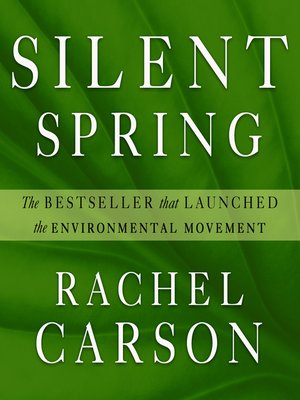

Rachel Carson and her work began initiating a shift in global environmental consciousness. Released in 1962, it focuses on the negative effects of chemical pesticides that were, at the time, a large part of US agriculture. 4, 1522–1530 (2020).Silent Spring is considered the book that started the global grassroots environmental movement. Sanders, D., Frago, E., Kehoe, R., Patterson, C. Indeed, a study published last year in Nature Geoscience estimates that some 64% of global agricultural land is at risk of pesticide pollution from more than one active ingredient, with 34% of high risk areas occurring in biodiversity hotspots 5.ĭerryberry, E.P., Philips, J. It seems likely that these conflicts will continue to exist where there is an agricultural need to control organisms that affect productivity and yield, and it also highlights the challenge of targeting specific ‘pest’ species without also having negative impacts on the broader ecosystem. Where they have been subject to a ban, alternatives such as sulfoximine-based pesticides that act in a similar neurotoxic manner have replaced them, for which there is also evidence of sub-lethal impacts on pollinators 4.


Their lethal and sub-lethal effects on non-target pollinator species have been the subject of a huge amount of research over the past decade 3, and although three of the most widely used neonicotinoids have now been banned in the European Union, they continue to be used on a global scale. In recent years, focus has shifted away from the likes of broadly applied pesticide sprays such as DDT towards neonicotinoid pesticides applied as seed treatments, which were initially thought to offer a more targeted approach to pest management. Despite this remarkable, rapid policy impact of Silent Spring on the use and regulation of chemicals in the environment, multifaceted threats to wildlife from pollutants still persist, many of which, like sensory pollution, would probably not have been foreseen in the 1960s.


 0 kommentar(er)
0 kommentar(er)
